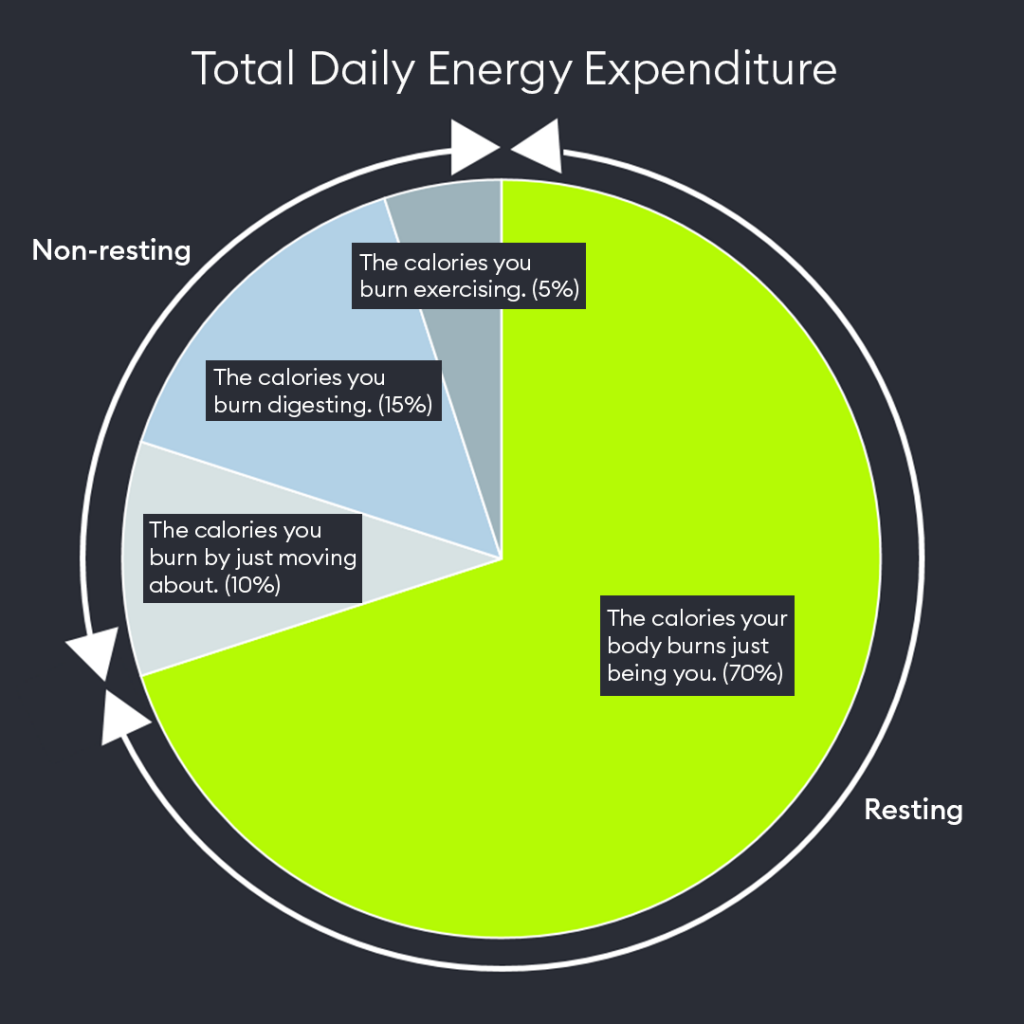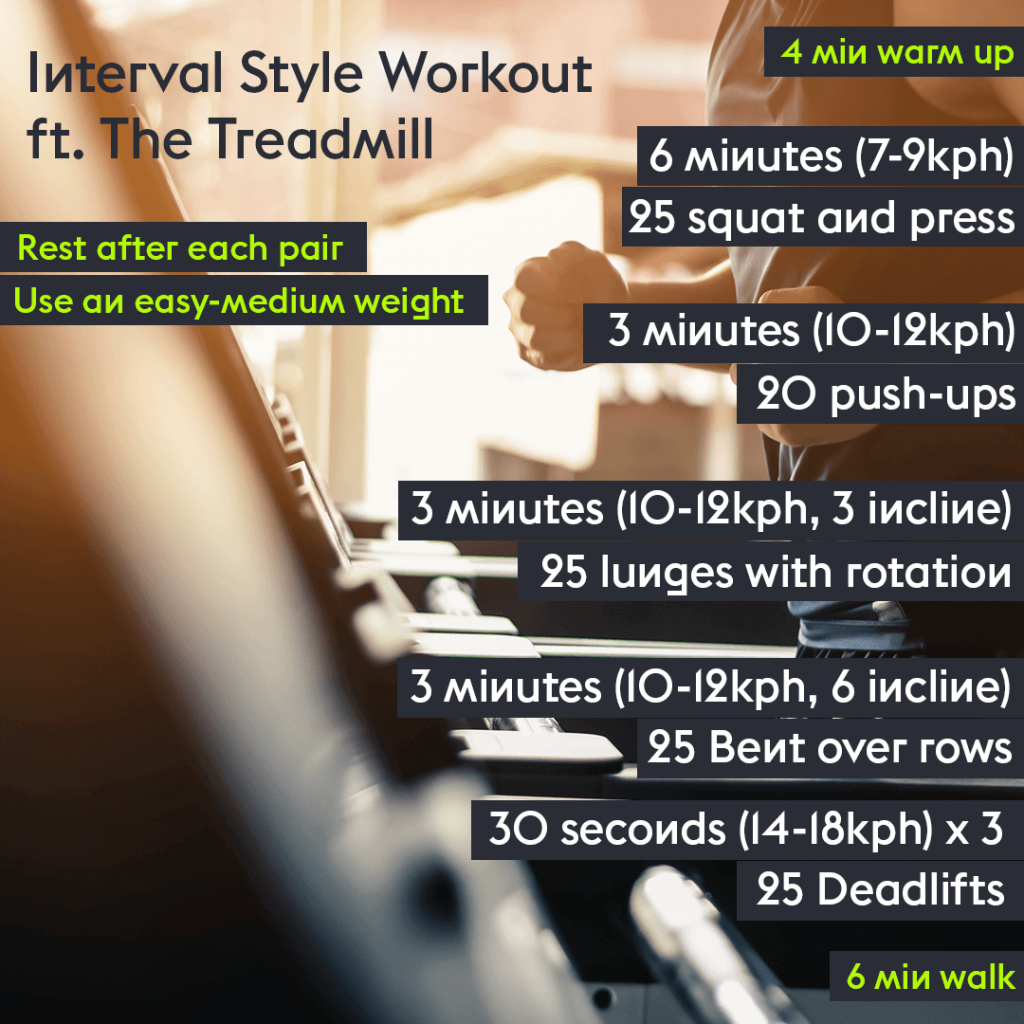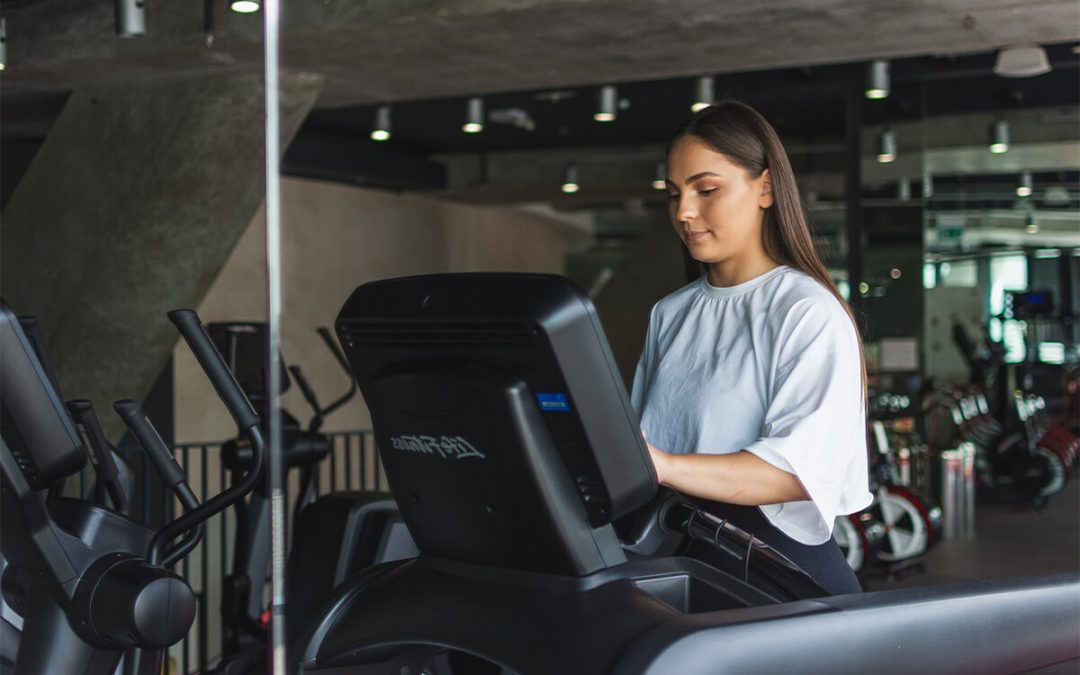Weight loss is not an easy journey. Anyone who’s been around the block with it before will know it takes some serious time, effort, and commitment.
It also takes some understanding of how weight loss works and what our bodies respond best to. Once we’ve got to grips with the fundamentals, it’s all about finding our own tactics to make it work for us. Everyone is different, and what’s beneficial for some may seem silly to others.
There’s no magic training or nutrition programme that suits everyone. It’s all about finding our feet with it. Everyone knows exercise burns energy, but understanding exactly how it can contribute towards our weight-loss goals and where its limits are can support our efforts in the long run.
Exercise isn’t all about weight loss. And weight loss is not all about exercise. Understanding its place in your lifestyle is key to figuring out an approach to weight-loss that is sustainable and suits you.
Let’s start with the calorie.
TThe calorie. A unit of measurement for energy that’s critical to understanding how weight-loss works.
Every single food and every single activity has an energy value attributed to it. Both are measured in calories. Calories define the amount of energy associated with what you eat and what you do.
You need calories going in to convert to energy. This energy is used for everything your bodies does. It’s the energy you function off. You’ll know from your high school science lessons that energy cannot be created or destroyed. It’s converted from one thing to another. You take energy from food, and your body converts it into fuel to perform its everyday processes and movements.
Looking at the calories we eat
Every bit of food you eat has a calorie content. As you’ll be well aware, some foods contain more calories or are denser in calories than others.
It’s easy to see lower-calorie foods as healthier than higher calorie ones. That’s not always the case. And this is important to understand when it comes to weight loss.
Food packed with nutrients doesn’t always come with a low-calorie label. Similarly, low-calorie food may be pretty much void of nutrients. Take an avocado, for example. It’s a fruit rich in several B vitamins, vitamin K, C, E and potassium. It’s a brilliant source of monounsaturated fat too. However, it’s pretty high in calories, containing up to 400 calories per fruit.
On the other hand, a processed product like a marshmallow is pretty low calorie. It’s tasty and delicious, of course. There’s no harm in having one. But it’s also pretty void of nutrients. A heavy marshmallow diet might not be too high on the calorie front, but it’s also not delivering the essential vitamins and minerals your body needs to look after itself. That’s the difference between low-calorie and healthy.
Your body needs nutrients to function at its most efficient. Opting for a balanced diet of macro and micronutrients is always the best option. Don’t worry; there’s room for less nutrient treats too.
On top of choosing nutrient-rich natural foods, it’s essential to check the calorie content if you want to lose weight. Because, after all, this is what it boils down to. Being mindful of calorie-dense foods and how much of them you include in your diet is an easy and low maintenance step to reducing your overall intake. Cooking oils, nuts, full-fat milk, honey, hummus, butter, and sugar are all things you might add to your diet without noticing. Each of those items pack a punch on the calorie front, so holding them back might help you create a more significant daily calorie deficit without really realising.
Looking at the calories we burn
The body burns calories during every single process that takes place. Ones that are in our control and outside of it, the body continually burns calories.
There are four ways our body burns energy. In total, these make up your TDEE. This stands for total daily energy expenditure. When you get into bed at the end of the day, it’s the total number of calories your body has burned by doing everything it needed to do.
Let’s start with REE. This stands for resting energy expenditure. REE is also called your BMR or basal metabolic rate. It’s the amount of energy your body needs to carry out its functions to sustain life. It’s everyday bodily processes. Breathing, circulation, nutrient processing, cell production. All the things that are going on that we can’t even control. They all require energy. This accounts for the largest proportion of the calories you burn in a day. Just being you.
TEF stands for thermic effect of food. Just digesting, processing and converting food requires energy from the body.
Then onto the things we can control. Here’s where your ears should prick up.
NEAT stands for non-exercise activity thermogenesis. It describes all physical activity and movement we undertake that’s not us purposely exercising. Standing, sitting, walking, reaching, lifting. Anytime we move a muscle, we’re contributing to our NEAT. This energy usage often contributes to the most significant proportion of calorie burn that we can control. It’s often underestimated and undervalued in those looking to lose weight. There’s a reason lots of activity trackers focus on achieving 10,000 steps per day. Not because it’s the magic number, but because by focusing on just moving more throughout the day, you’ll burn so many more calories than you would have done if you didn’t move from your sofa or desk.
Those with activity trackers will have noticed this. For example, on the day you went to the shops in the morning, went for a walk at lunch, did some hoovering in the afternoon, and went to meet a friend in the evening, you might have burned 2200 calories. But on the day that you sat straight at your desk and then watched a movie in the evening, you only burned 1600 calories. That’s 600 calories difference between these days and is very worth being aware of. The single biggest thing you can do to lose weight is to move more throughout the day.
Finally, there’s EAT, which stands for exercise activity thermogenesis and describes the energy expenditure that happens when we purposely engage in physical exercise. At the gym, on a run, or wherever. On average, this only accounts for 5% of the calories we burn per day. It, of course, varies depending on the volume, type, and intensity of the exercise being done, but it’s often a lot lower than people expect. Activity trackers are also notorious for over-egging it. So, be careful when you take their word for it.

How does the body lose weight?
Our bodies lose weight when we consume fewer calories than we burn over a prolonged period. That’s it. It’s simple math. In vs out.
It doesn’t matter what type of calories are consumed, whether they’re from carbs, fats, proteins, whether they’re eaten after fasting, before exercise, after exercise, or whatever. If you burn more calories than you consume, your body will convert its fat stores into energy to make up for this deficit, and, as a result, you will lose weight.
People like to use plenty of different tactics to achieve this, but at the heart of any successful approach is a calorie deficit. It’s the simple science that underpins any diet or weight loss program.
There are two ways you can create a calorie deficit. Controlling food intake and controlling energy expenditure. In simple terms, diet and exercise.
How does exercise help you lose weight?
Exercise is excellent for everybody. There are many benefits to the body, our minds, and our general health that go way beyond just wanting to lose weight. But if you are looking to do this, the gym can be a helpful tool.
Exercise can help to contribute to creating a calorie deficit. You’re burning extra calories that can top up your other efforts. The emphasis is on the top-up. When looking to lose weight, your focus should be on controlling the number of calories you consume and making sure you’re moving enough during the day and staying active. Moving more continuously throughout the day will have the biggest impact. You can then top-up these efforts even more in the gym and add to the calorie burn.
So, how can you use the gym to help you lose weight?
When it comes to the gym, you can use the exercise you do there as a tactic to help you create this calorie deficit. It’s an opportunity to make a larger gap between the amount you consume and the amount you burn.
It shouldn’t be the basis of your weight loss approach, but it’s certainly going to help you top up your efforts and get you where you want to be, all whilst keeping your body fit and healthy along the way.
The type of exercise you do in the gym will determine how many calories you burn as a result.
In the immediate term, cardiovascular exercise burns more calories than other types of workout. For a person weighing 160 pounds, the following activities would burn the following amount of calories per 30 minutes:
Running (moderate pace – 6mph) : 358 calories
Cycling (moderate pace – 12 mph) : 292 calories
Swimming (front crawl) : 212 calories
Rowing (5 mph) : 212 calories
Lifting weights doesn’t burn as many calories in the moment as cardio does, but that’s not the whole picture. Resistance training helps to build muscle. More muscle burns more calories at rest. This means that in the long term, the more muscle you have, the more calories you will burn at rest. Research also suggests that you continue to burn calories in the hours following a resistance training session. There are many reasons to keep it a part of your routine.
Then you’ve got activities like HIIT, circuits, or interval training. You’re not lifting as much weight or building as much strength, but you’re still training your muscles and getting into an aerobic zone. These types of exercise are pretty intense. Although it can be hard to put a value on the number of calories being burned due to the variations in each session, it’s a pretty efficient way of burning energy and building muscular endurance simultaneously. If you struggle to fit fitness in, these workouts can give you full-body conditioning in with one session and burn some extra calories at the same time.
When trying to lose weight, your attention needs to focus on the below. These are in order of importance:
1. What you’re eating.
You need to be aware of the number of calories you are consuming per day.
2. How much you move.
Away from the gym, just make sure you’re keeping active throughout the day. Walk more, take the stairs, get up from your seat often, stretch before bed.
3. Add in some exercise.
Top up your efforts in the gym. Focus on full-body conditioning in the form of interval or circuit training. This will help you develop well-rounded fitness and mean you’re not just stuck on the cross-trainer the whole time.

We’ve got another tip for if you’re struggling to fit fitness in. Use your Hussle pass to get multi-gym access and online workouts all in one. One flexible pass that makes it a whole lot easier.



